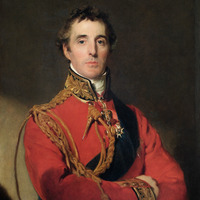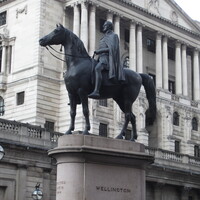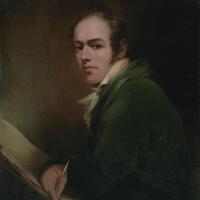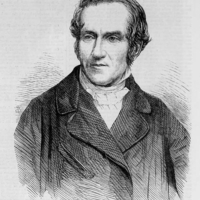How to cite this page Comment citer cette page
Equestrian statue of the Duke of Wellington, City of London
Monument
- Media metadata | Métadonnées multimédias
- was classified by | a été inscrite, classée, protégée par le biais de
- Grade II
- depicts | figure
 Wellesley, Arthur, 1st Duke of Wellington
Wellesley, Arthur, 1st Duke of Wellington- consists of | consiste en
- bronze
Statue | La statue
- has inscription | a une inscription
- On the left and right hand sides of the plinth:
WELLINGTON - On the front and back of the plinth:
ERECTED JUNE 18, 1844
- Brass plaque at the base of the plinth:
On 19th July 1838 the Court of Common Council of the City of London agreed to a contribution of £500 toward the cost of the above statue of the Duke of Wellington in appreciation of his efforts in assisting the passage of the London Bridge Approaches Act 1827. This Act led to the creation of King William Street. The government donated the metal, which is bronze from captured enemy cannon melted down after the Battle of Waterloo, and valued at the time at £1500. The total cost of the statue was £9000. The remainder being raised by public subscription.
The sculptor, Sir Francis Chantrey (1781 to 1841), was commissioned in 1838 but died before the work was completed. It was finished by his assistant Henry Weekes (1807 to 1877).
The Lord Mayor, William Magnay, unveiled the statue on 18th June 1844, the anniversary of Waterloo, in the presence of his guest the King of Saxony.
Adjoining the statue, a piece of granite from London Bridge (1825 to 1967) has been set into the pavement by the Corporation of London. The elevational stonework from the same bridge was re-erected over the Colorado River in Lake Havasu City, Arizona, USA, in 1971. - consists of | consiste en
- granite



